Occupation Artist, entrepreneur Role Artist | Name John Johnson Website www.sewardjohnson.com | |
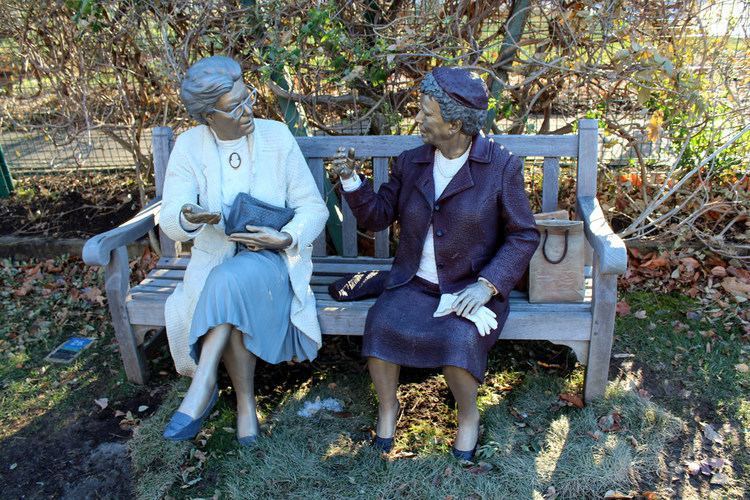 | ||
Children Jenia Anne "Cookie" JohnsonJohn Seward Johnson IIIClelia Constance Johnson Spouse Joyce Horton, Barbara Kline Books Celebrating the familiar, Burgh Castle, Norfolk Parents Ruth Dill, John Seward Johnson I Siblings Mary Lea Johnson Richards, James Loring Johnson Similar People | ||
Grandparents Robert Wood Johnson I | ||
John Seward Johnson II
John Seward Johnson II (born 16 April 1930), also known as J. Seward Johnson Jr. and Seward Johnson, is an American artist known for his trompe l'oeil painted bronze statues. He is a grandson of Robert Wood Johnson I, the co-founder of Johnson & Johnson and Colonel Thomas Melville Dill of Bermuda.
Contents
- John Seward Johnson II
- Popular Videos Grounds For Sculpture John Seward Johnson II
- Early life
- Career
- Criticism
- Philanthropy
- Personal life
- References
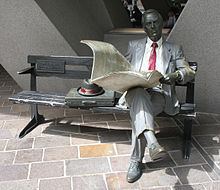
He creates life-size bronze statues, which are castings of living people, depicting them engaged in day-to-day activities. A large staff of technicians perform the fabrication.
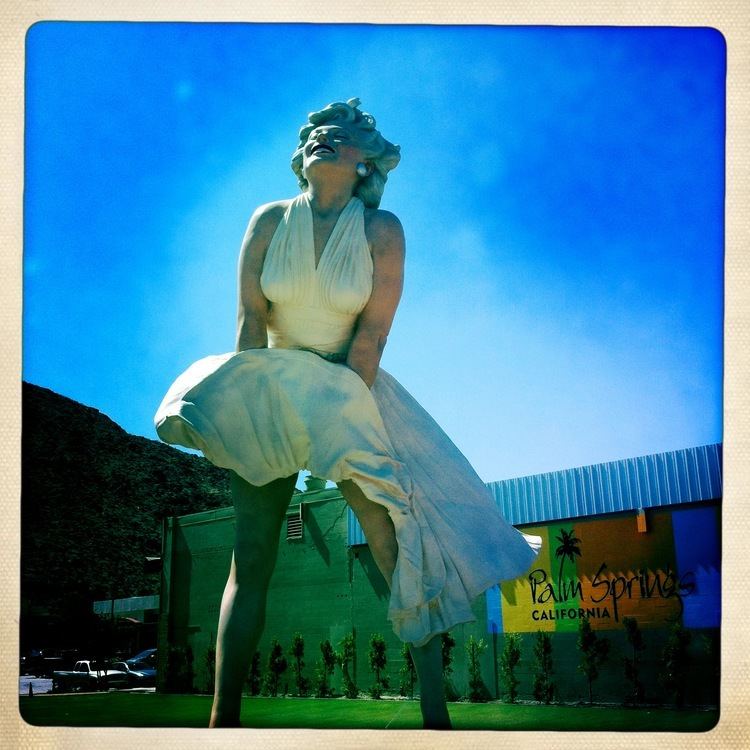
Popular Videos - Grounds For Sculpture & John Seward Johnson II
Early life

Johnson was born in New Jersey. His father was John Seward Johnson I, and his mother was Ruth Dill, the sister of actress Diana Dill, making him a first cousin of actor Michael Douglas. Johnson grew up with five siblings: Mary Lea Johnson Richards, Elaine Johnson, Diana Melville Johnson, Jennifer Underwood Johnson, and James Loring "Jimmy" Johnson. His parents divorced around 1937, and his father remarried two years later, producing his only brother Jimmy Johnson, making him an uncle to film director Jamie Johnson.

Johnson attended Forman School for dyslexics and University of Maine, where he majored in poultry husbandry, but did not graduate. Johnson also served four years in the Navy during the Korean War.
Career
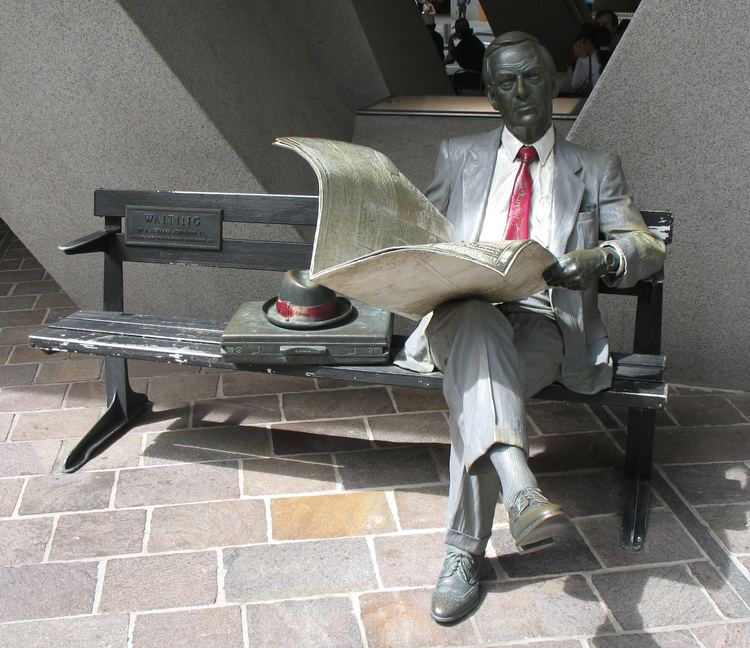
Johnson worked for Johnson & Johnson until he was fired by his uncle Robert Wood Johnson II, in 1962.
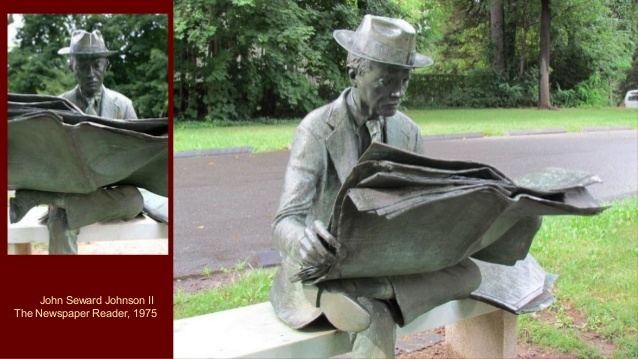
His early artistic efforts focused on painting, after which he turned to sculpture in 1968. Examples of his statues include:
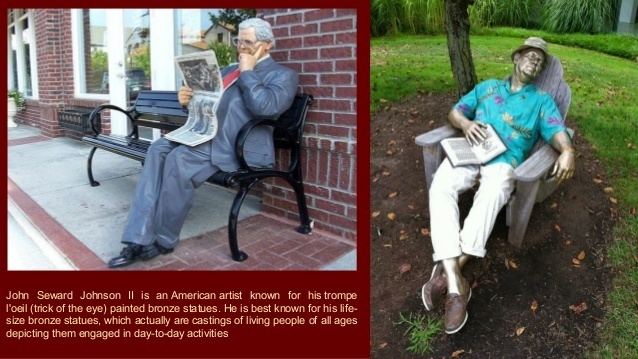
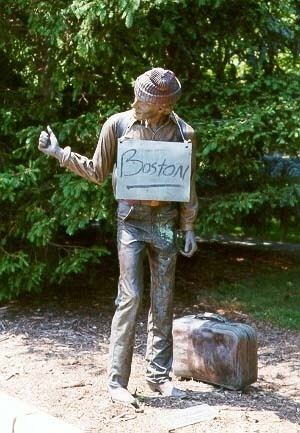
For statues made recently in a series named, Iconic, by Johnson, many of which are very large, a computer program is employed that translates two-dimensional images into statues that are constructed by a machine driven by the program. Often, these subjects are images that already are well known as the works of others, generating heated ethical controversies regarding copyright infringement and derivative works due to substantial similarity issues.
Johnson's works were selected by the United States Information Agency to represent the freedoms of the United States in a public and private partnership enterprise representation sponsored by General Motors and many other US corporations at the World EXPO celebration in Seville, Spain during 1992.
Criticism
Johnson's work was labeled as "kitsch" in a 1984 article by an art professor and critic at Princeton University, who explained its rejection as he was commenting on a controversy raging about the work in New Haven, Connecticut.
His 2003 show at the Corcoran Gallery of Art, Beyond the Frame: Impressionism Revisited, which presented his statues imitating famous Impressionist paintings, was a success with audiences, but was panned by professional art critics of national stature and drew strong criticism from curators at other museums about a prominent museum of fine art presenting an exhibit of his work.
Philanthropy
Johnson is the chairman and CEO of The Atlantic Foundation, the foundation created by his father John Seward Johnson I in 1963. Johnson created the Johnson Atelier Technical Institute of Sculpture, an educational, nonprofit casting and fabrication facility in 1974 as a means of fostering young sculptors' talents, while creating a foundry designed to construct his statues that is so well-equipped and staffed that it is chosen by many renowned sculptors. Educational programs at the Atelier ceased in 2004. The Johnson Atelier now operates as a division of The Sculpture Foundation, and Johnson continues to make his sculpture at the facility but casting is often performed off premises, with some of his larger works being cast in China.
He also founded an organization called "The Sculpture Foundation", to promote his works. In 1987, he published Celebrating the Familiar: The Sculpture of J. Seward Johnson, Jr.
Under Johnson's direction, The Atlantic Foundation purchased the old New Jersey Fairgrounds in Hamilton, New Jersey and in 1992 founded the Grounds For Sculpture to display work completed at the Johnson Atelier and other outdoor exhibitions. In 2000 park operations were transferred to a new public charity with the same intent that continues to operate the park.
He is former president of the International Sculpture Center of Hamilton, New Jersey, which publishes a magazine out of offices in Washington, DC.
Johnson also is the former president of a large oceanographic research institution in Florida founded by his father, the publisher of a science magazine, Johnson and his wife funded the construction of The Joyce and Seward Johnson Theater for the Theater for the New City, an Off-Broadway theater in New York.
Personal life
Johnson was excluded from his father's will, which left the bulk of his fortune to Barbara Piasecka Johnson, his father's wife and former chambermaid. He and his siblings sued on grounds that their father wasn't mentally competent at the time he signed the will. It was settled out of court, and the children were granted about 12% of the fortune.
Johnson was formerly married to Barbara Kline. She often engaged in extramarital affairs in their home, driving Johnson to attempt suicide. In 1965, he acknowledged paternity to Jenia Anne "Cookie" Johnson without a DNA test, to speed up the divorce process. Years later, Johnson's family had a legal battle regarding Cookie Johnson's eligibility for a share in the Johnson & Johnson fortune. The court ruled in favor of Cookie.
Johnson later married Joyce Horton, a novelist. They have two children: John Seward Johnson III and actress Clelia Constance Johnson who goes by the name "India Blake".
